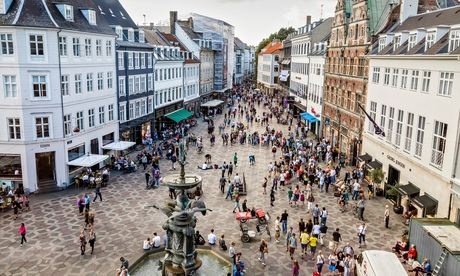The notion that condensed living spaces always heighten misery is flawed; interaction keeps us sharp and more content.

It is a seeming paradox that what makes us most stressed about cities is also what makes them so attractive: other people. Just as some neuroscientists are telling us being together makes us ill, others are proving we are hardwired to be together.
In his book Social: Why Our Brains Are Wired to Connect, the psychologist Matthew Lieberman uses MRIs to show how our brains react to social interactions as acutely as they do to physical pleasure and pain.
Meanwhile, the Chicago neuroscientist John T Cacioppo, in his recent book Loneliness, suggests being lonely is associated with a 14% higher risk of early death – twice the death risk rate associated with obesity.
Cacioppo argues chronic loneliness is an evolutionary impulse that encourages us to come together, a warning that we need to connect to survive. Moving to the country after retirement, he suggests, could be detrimental to our health.
From our partners:
The Danish architect Jan Gehl, who was instrumental in creating the pedestrianised Strøget neighbourhood in Copenhagen, is dedicated to what he calls “the life between buildings”. Gehl studied why so many people came to Strøget, and came to a simple conclusion: people are most interested in other people, and good public spaces can offer a safe, open place where people can be together.
It’s easy to assume we lose something by being part of a crowd but often the opposite is true. One 2011 study measured politeness in three parts of the UK: a marketplace in Newham, a new town in Cambridgeshire and a collection of villages. The study found that it was in Newham, the poorest and most diverse location – exactly where we might imagine the most anxiety – that the highest levels of civility were observed.

The nature of the built environment is also crucial in determining mental health. Green spaces can go a long way to improving contentment levels. A child who lacks regular encounters with green spaces can develop stress disorders, and the less green an environment, the higher the rate of violence and assault.
In addition, places you might want to walk rather than drive through can be a powerful force for good (on top of the obvious benefit of exercise). A child who bikes or walks to school has improved concentration levels all the way to lunchtime.
Something special occurs when people come together. In The Death and Life of Great American Cities, Jane Jacobs describes the joy of what she calls the ballet of the ordinary street: “The individual dancers and ensembles all have distinctive parts which miraculously reinforce each other and compose an orderly whole. The ballet of the good city sidewalk never repeats itself from place to place, and in any one place is always replete with improvisations.”
If shared city spaces increase wellbeing, it stands to reason that the more equal a city, the healthier it is – yet the benefits of urban living are unevenly distributed, and this gap is widening.
London’s mayor, Boris Johnson, has claimed that cities need a bit of inequality to work and that envy is a good thing. But the fact remains that an unequal city is a divided one, where trust is allowed to wither and we stop looking out for each other.
As Jacobs wrote: “Cities have the capability of providing something for everybody, only because, and only when, they are created by everybody.”
This article originally appeared on The Guardian.
















